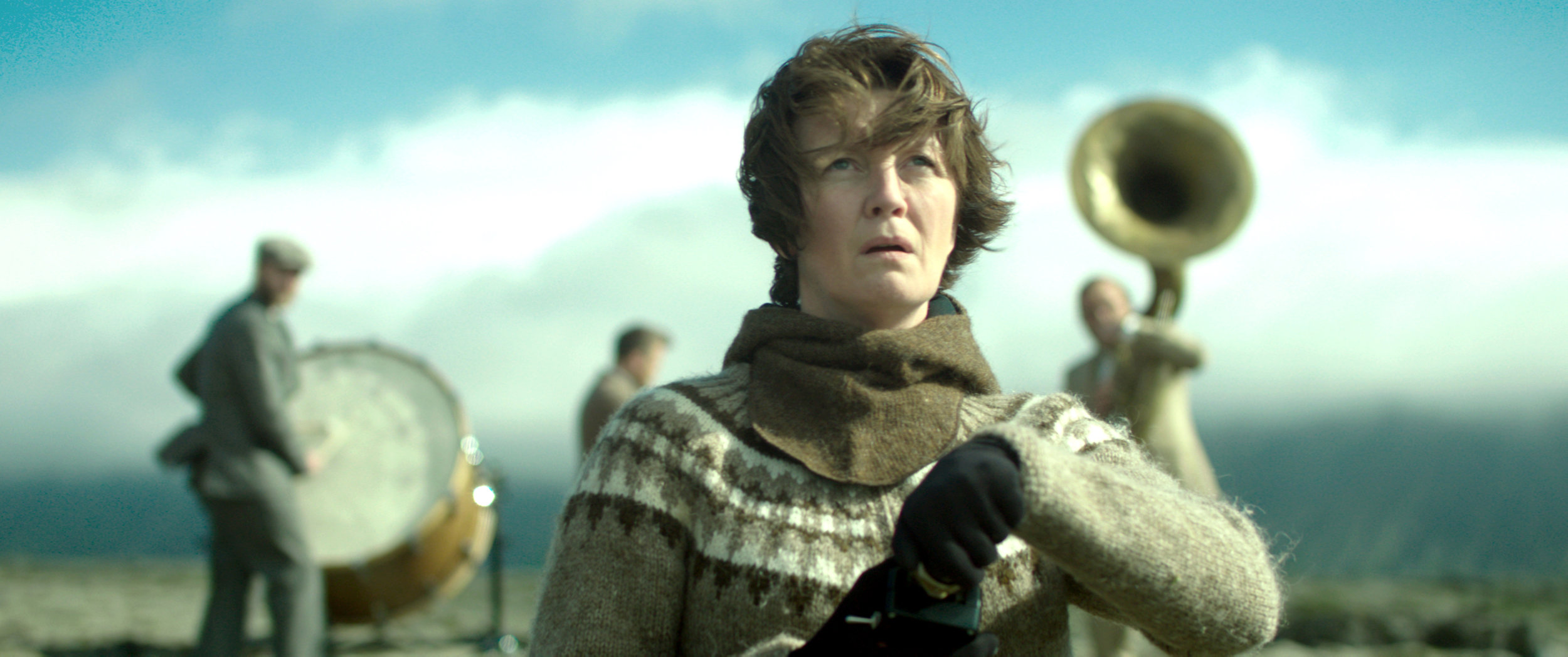Woman at War: A quirky feel-good movie about an Icelandic eco-warrior
By Jim Slotek
Rating: B
There are fascinatingly conflicting images of Iceland. It is a country of sexual egalitarians who believe in elves and Bjork (same thing maybe). And post-’08, it was the only country that put top bankers in jail, so it seems to have an enviable moral streak.
And judging by the oddly good-natured Woman at War, even its eco-terrorists are adorably quirky.
The whimsically satirical movie by Benedikt Erlingsson - which debuted at Cannes and played at the Toronto international Film Festival - introduces us to Halla (Halldóra Geirharðsdóttir), a cheerful choir director whose day-to-day existence is a front for her double life as a one-woman eco-army. Armed only with a high-tension bow-and-arrow and meticulous planning, she’s capable of taking down power lines and cutting off the juice to a controversial, environmentally-damaging aluminum plant.
Eco-vigilante Halla (Halldóra Geirharðsdóttir) sets to work while Ukrainian musicians play her onward.
These activities obviously make her newsworthy, leading the nightly TV news broadcasts and putting heat on the authorities, and in turn, on Halla herself.
She’s not actually working alone, as it turns out. Baldvin (Jörundur Ragnarsson) a nervous friend in the government, has been feeding her relevant information. And when she’s almost caught by increasingly vigilant authorities, she gains a new ally in a burly farmer named Svenbjörn (Jóhann Sigurðarson), who fancies her his “cousin,” and harbours a fugitive with barely a second thought.
Halla’s unlikely activism obviously works in her favour. And so does the casual racism of the police, who keep arresting the same olive-skinned Spaniard (Juan Camillo Roman Estrada) over and over for her crimes.
This repeated absurdist gag is the kind of thing director Erlingsson sprinkles eccentrically throughout Woman at War. There’s also a Ukrainian folk trio that follows Halla around, unseen by anybody, adding soundtrack music with a physical presence like a musical Greek choir.
The folk trio also connects narratively to a distracting event in Halla’s “normal” life. Out of the blue, she is informed that her long-ago application to adopt a Ukrainian orphan has finally been approved. Though not unwelcome, this complicates her mission.
And hey? Did we mention Halla has a twin (also played by Geirharðsdóttir)? Introduced initially without apparent connection to anything else in the movie, she is a yoga instructor whose use as a plot contrivance had me Googling whether identical twins actually have identical DNA.
Though the quirk is ladled on a little thick at times, Woman at War is a surprisingly crowd-pleasing film experience considering its subject matter. In style, Erlingsson evokes the playfulness of Finnish director Aki Kaurismaki, and it seems impossible to film anything in Iceland without being hypnotized by the landscape.
Unsurprisingly, its crowd-pleasing qualities have not gone unnoticed by Hollywood, which has a Woman at War remake in the works, with Jodie Foster reportedly attached to direct and star.
See this version first. Or maybe just see this version.
Woman at War. Directed by Benedikt Erlingsson. Starring Halldóra Geirharðsdóttir, Jóhann Sigurdarsonand Juan Camillo Roman Estrada. Opens March 15 at Toronto’s TIFF Bell Lightbox.

